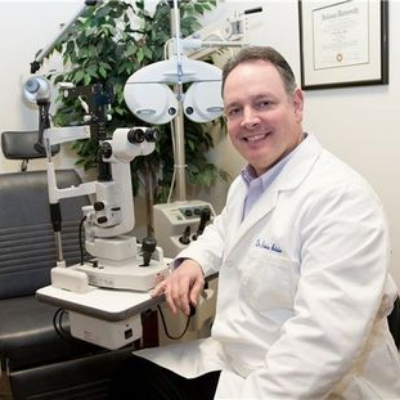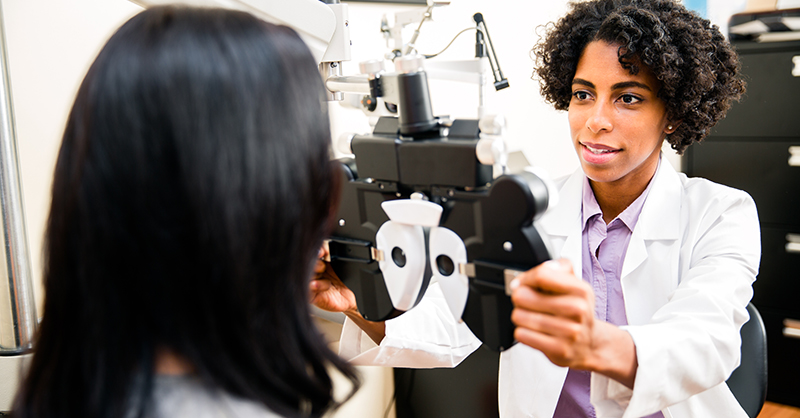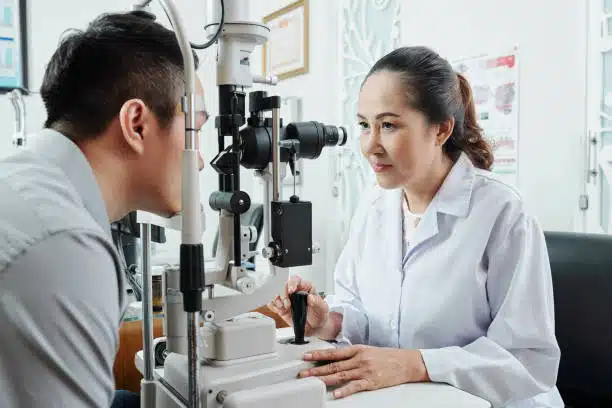Discover a Trusted Optometrist Chino for Family Eye Care Solutions
Discover a Trusted Optometrist Chino for Family Eye Care Solutions
Blog Article
Checking Out the current Technological Developments in Optometry and What They Mean for Eye Doctors
In the ever-evolving field of optometry, recent technical improvements are improving how practitioners approach eye care. From the accuracy of Optical Coherence Tomography to the nuanced understandings provided by AI-driven diagnostic devices, these technologies are setting new requirements in patient evaluation and treatment. Teleoptometry is positioned to redefine access, making certain that expertise goes beyond geographical restrictions. As these developments penetrate the practice, optometrists are confronted with the challenge of welcoming these devices to improve client results. The concern stays: just how will these technical changes redefine the functions and obligations within the career?
Developments in Diagnostic Devices
Progressing the area of optometry, advancements in analysis devices have actually transformed the means eye treatment professionals examine and detect ocular problems and aesthetic disabilities. The previous years has experienced substantial technical developments, enabling more exact and thorough evaluations.
One more secret technology is the intro of innovative corneal topography systems, which map the surface curvature of the cornea with precision. These tools are particularly valuable for fitting call lenses and identifying corneal problems. Moreover, electronic retinal imaging has changed standard ophthalmoscopy, using detailed, scenic sights of the retina that promote complete visual assessments.
The development of wavefront aberrometry has additionally been important, enabling the analysis of refractive mistakes with unrivaled accuracy (Optometrist Chino). This technology assists in customizing corrective lenses and enhancing surgical end results for refractive surgical procedures. Jointly, these analysis improvements empower eye doctors to supply exceptional patient treatment, making sure very early intervention and tailored therapy approaches, ultimately enhancing visual health end results
AI in Individual Monitoring
Building on the foundation of innovative analysis devices, the unification of expert system (AI) in individual management represents a transformative leap for optometry. AI systems are significantly employed to improve effectiveness, precision, and personalization in person care. By evaluating vast amounts of information, AI can identify patterns and predict potential ocular conditions, enabling eye doctors to customize interventions extra properly. This ability is critical in handling chronic eye diseases such as glaucoma and diabetic person retinopathy, where early detection and continuous tracking are vital.
Moreover, AI-driven platforms facilitate structured patient interactions and management processes. Automated scheduling, digital consultations, and personalized follow-up plans not only boost client complete satisfaction however additionally optimize time management for professionals. These systems can triage individuals based upon the urgency of their conditions, guaranteeing that those in essential demand get punctual focus.
Moreover, AI improves decision-making by supplying optometrists with evidence-based referrals and therapy pathways. By integrating data from digital health and wellness documents, AI tools use insights that inform professional choices, reducing the danger of mistakes and boosting client outcomes. As AI remains to develop, its role in patient management will likely expand, reshaping the landscape of optometric treatment.
Developments in Retinal Imaging
In the world of optometry, retinal imaging has actually observed exceptional technical advancements that are improving analysis abilities and client treatment. Advancements such as Optical Comprehensibility Tomography (OCT) and fundus photography have transformed how eye doctors imagine and assess the retina. OCT, specifically, offers high-resolution, cross-sectional pictures of the retina, allowing for the thorough evaluation of its layers. This ability is indispensable for very early detection and monitoring of conditions like glaucoma, diabetic retinopathy, and age-related macular deterioration.
Enhanced imaging methods like OCT angiography are further refining analysis precision. This non-invasive method maps blood flow in the retina, using crucial understandings into vascular health and wellness without the demand for color shots. In addition, flexible optics modern technology is being incorporated right into retinal imaging systems to deal with eye aberrations, delivering extraordinary picture clarity. Such advancements assist in the identification of min retinal changes that could indicate illness progression.
In addition, developments in man-made intelligence are boosting retinal imaging by allowing automatic analysis of huge datasets. These systems aid eye doctors in determining patterns indicative of pathology, consequently boosting analysis precision and performance. Jointly, these advancements are changing retinal imaging into a cornerstone of contemporary eye care, improving outcomes and broadening healing possibilities.
Teleoptometry's Growing Role
Teleoptometry is significantly coming to be a vital part of eye care, driven by advancements in electronic interaction and diagnostic devices. This is specifically useful in rural and underserved locations where accessibility to specialized eye care is typically restricted.
The integration of synthetic knowledge (AI) additional boosts teleoptometry, making it possible for the evaluation of aesthetic information and helping in the detection of eye problems such as glaucoma and diabetic person retinopathy. AI-powered algorithms can quickly interpret complex imaging information, offering optometrists with beneficial understandings that boost medical decision-making.
Furthermore, teleoptometry sustains connection of treatment through smooth combination with digital health and wellness records (EHRs), permitting optometrists to keep detailed individual histories. This ensures that patients obtain personalized and consistent treatment also when talking to different experts.
Despite these benefits, difficulties continue to be, consisting of guaranteeing data safety and security and managing patient assumptions. Nevertheless, teleoptometry stands for a considerable stride in the direction of even more easily accessible, efficient, and patient-centered eye care. As innovation evolves, its duty is poised to broaden even more.

Future Fads in Eye Treatment
A myriad of cutting-edge fads is readied to improve the future of eye care, driven by technological innovations and the developing needs of individuals. One significant pattern is the combination of expert system (AI) in diagnostics, which promises to improve the accuracy and effectiveness of eye exams. AI formulas can assess large amounts of information from retinal pictures, possibly discovering problems like diabetic person retinopathy this post and glaucoma earlier than conventional approaches.
Furthermore, personalized medicine is acquiring traction in optometry, with genetic screening notifying personalized therapy plans. This method intends to optimize client results by tailoring treatments to private genetic profiles. Wearable technology, such as smart contact lenses, is also imminent, offering real-time surveillance of intraocular stress or glucose his explanation levels, hence offering constant insights right into eye and systemic wellness.
The adoption of augmented truth (AR) and virtual fact (VIRTUAL REALITY) in training and individual education and learning is another arising pattern. These technologies use immersive experiences that can boost understanding and skills both for individuals and eye doctors. As these trends progress, optometrists need to stay abreast of technological developments to offer innovative treatment, guaranteeing better individual end results and fulfillment in the vibrant landscape of eye care.
Final Thought

Collectively, these diagnostic advancements empower eye doctors to supply superior client treatment, making sure early intervention and customized therapy techniques, ultimately boosting aesthetic health and wellness outcomes.

As these modern technologies continue to evolve, optometrists need to adjust and include them right into technique, inevitably enhancing workflow effectiveness and raising the standard of eye care provided to people.
Report this page